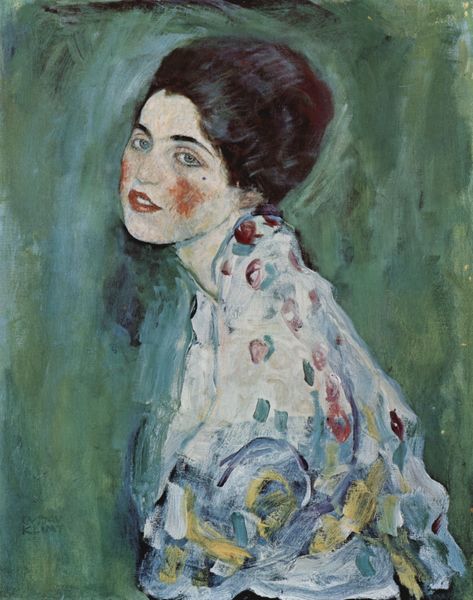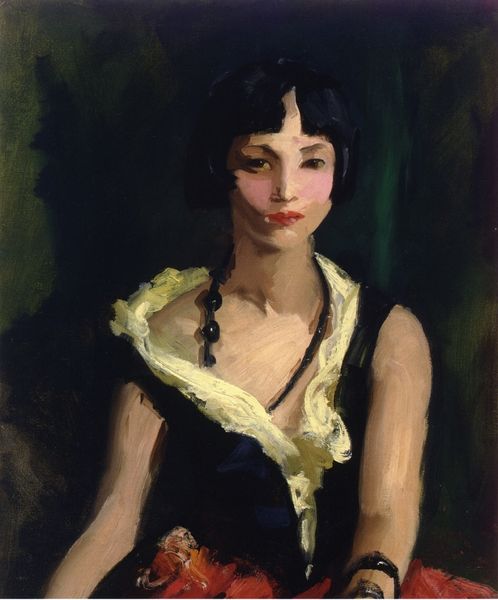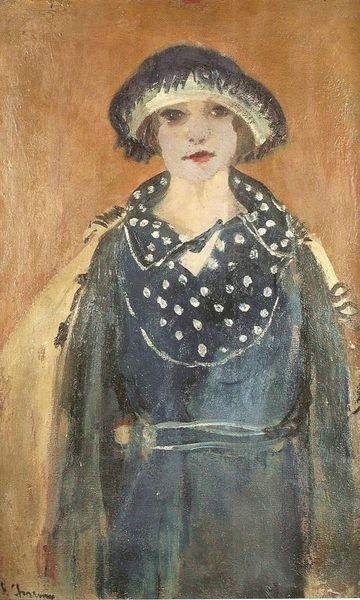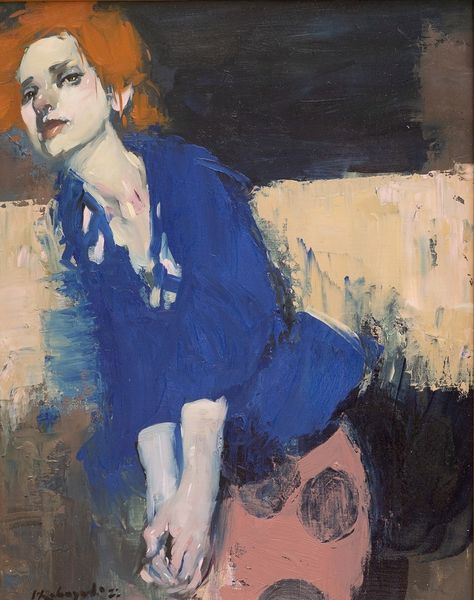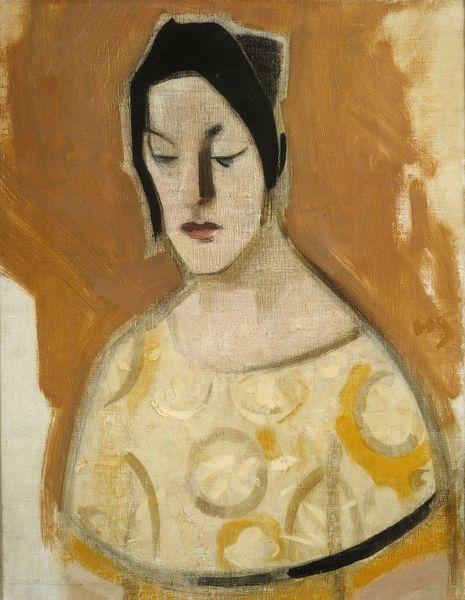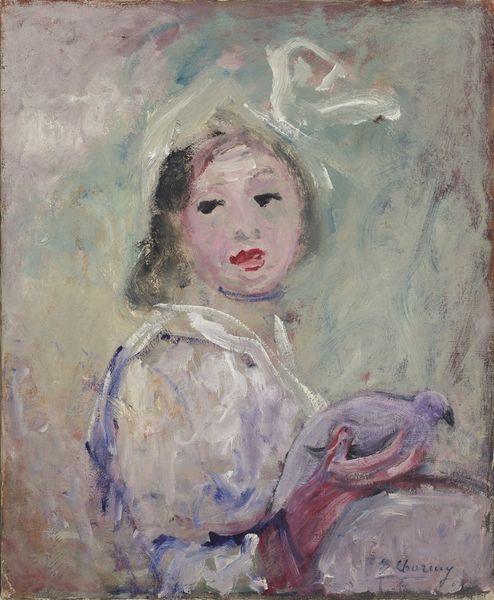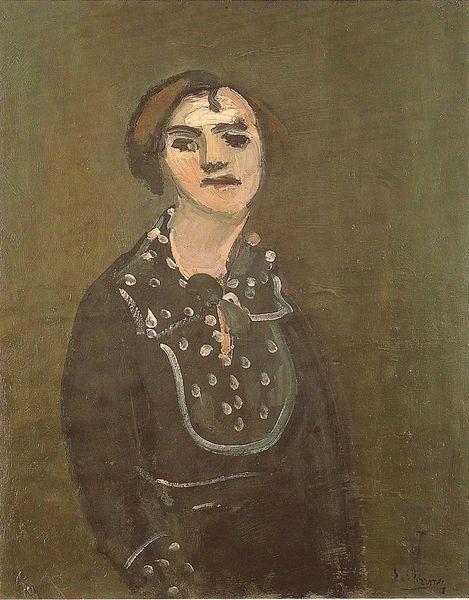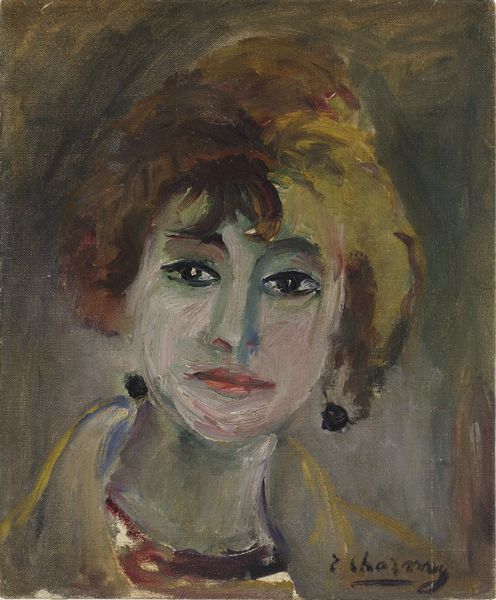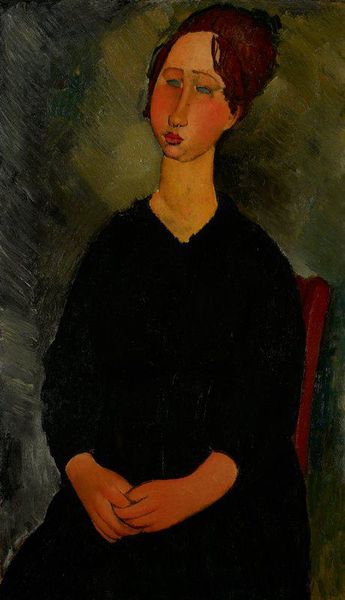
painting, oil-paint
#
self-portrait
#
painting
#
oil-paint
#
figuration
#
oil painting
#
expressionism
Copyright: Public domain US
Curator: Émilie Charmy's "Self-Portrait with Album," painted in 1912, presents a fascinating glimpse into the artist’s own perception. Editor: There’s a stark simplicity to it, isn't there? A directness that belies any attempt at idealization. I’m struck by the pronounced brushstrokes that articulate form, particularly the dress—you can almost feel the weight of the paint itself. Curator: The chromatic range here is critical. The russet backdrop is juxtaposed against the ultramarine of her dress, a deliberate construction designed to enhance the figure's presence and imbue it with a subdued radiance. Notice, too, the distribution of white, as a visual echo between the facial highlights and the decoration of her garment. Editor: That dress… It makes me think about the practicalities. Who made it? What kind of labor went into those meticulously rendered dots? How accessible was the fabric and dye for a woman artist in 1912? It certainly speaks to the consumerism that was blossoming at the time, perhaps subtly integrated within the "Self Portrait" motif. Curator: Certainly, the painting can be viewed as a historical artifact; but from a Formalist point of view, these contextual details are far less relevant than the interplay of color, line, and shape. How the brushstrokes construct the form, dictate texture and give form to the narrative presented within the image. Note how the expressionistic elements contribute to the construction of self-identity within the frame. Editor: The "Self-Portrait" genre, too, has interesting socio-historical significance. Self-portraits were a common way for artists to self-promote, a means of controlling their own image in the market. Charmy's expressionistic painting choices would be deliberate assertions within the art community of her time, possibly making bold statements regarding societal standards or personal aesthetic goals. Curator: You present compelling possibilities for approaching and dissecting this image. However, I still believe a purely aesthetic approach yields a comprehensive perspective. Editor: While the structure provides a critical lens, its true meaning lies not only in what the artist created, but also in how that labor, intention, and skill connects to its historical context. An intriguing piece to be sure!
Comments
No comments
Be the first to comment and join the conversation on the ultimate creative platform.
